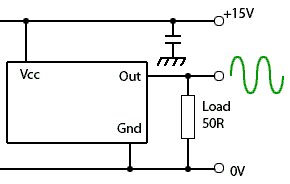patrickian01
Member level 1
What are ways that I can produce sine waves using the crystals that I have (maximum of 73MHz). I was thinking about using the pierce oscillator however, the RF Amplifiers are still not available. Someone suggested to me using Hex Inverters to produce the frequencies however, I don't know how to do this. Are there any other ways of using the crystals to produce sine waves?
